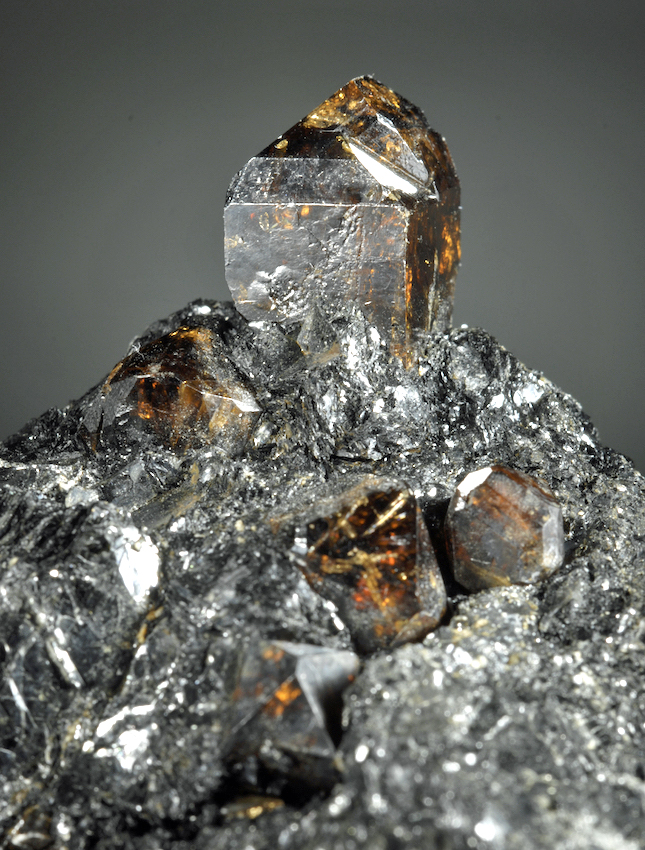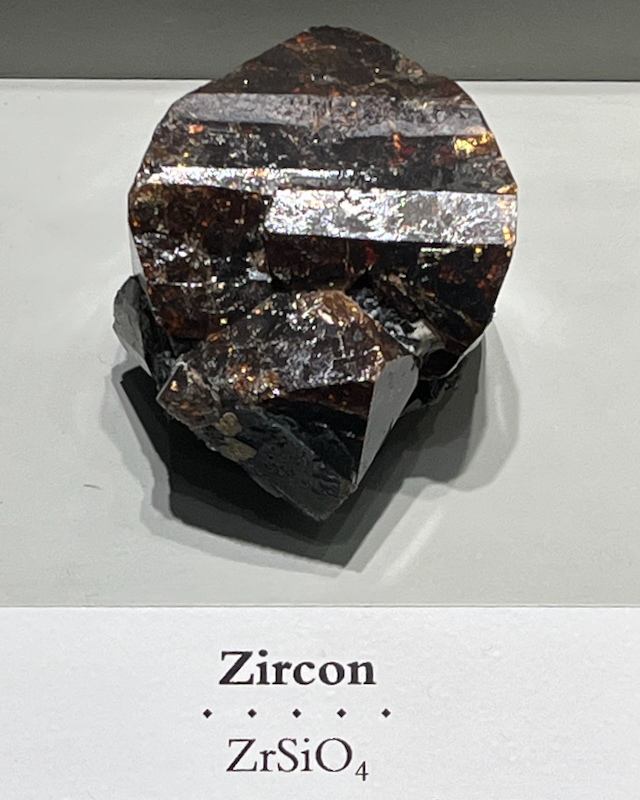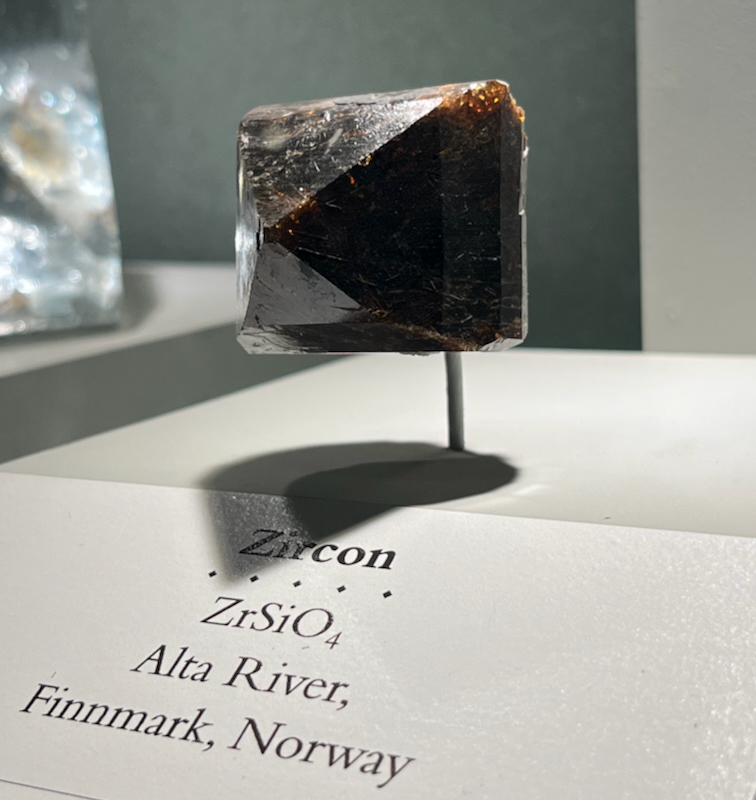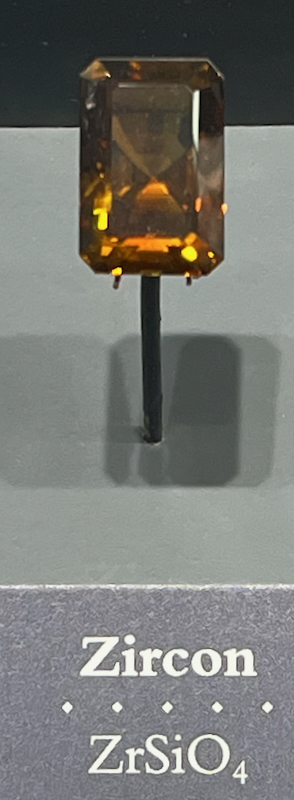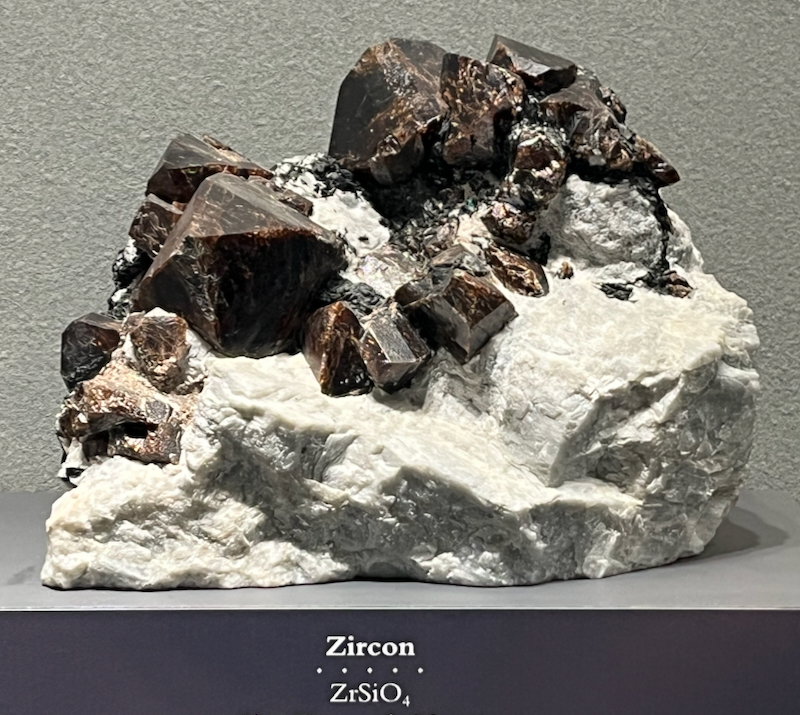Zircon
Zircons are a little harder than quartz, at 7.5 on the Mohs hardness scale, which makes them a good gemstone, but if they contain a radioactive element like uranium, which they sometimes do, the radiation can damage the crystal structure and make it softer. If you’re out collecting minerals, for example in a pegmatite, sometimes you’ll find a zircon crystal in a rock with what looks like a brown stain around the crystal. That brown area is caused by the radioactivity that is or was in the zircon. Although radiation can have a negative effect on zircon crystals, some geologists are happy to take advantage of any radiation present in the crystals, as they can measure the radiation to help determine how old the zircon is, along with the age of the rock around it. Zircon’s main ingredient, zirconium (Zr), isn’t very common in minerals, but if you’ve ever heard the word before, you may have heard of a gemstone called “cubic zirconia.” Cubic zirconia (ZrO2 or zirconium dioxide) is a synthetic (made by people/machines not nature) gemstone that’s harder than zircon, is very sparkly, like diamond, and has been used as a cheaper substitute for diamond in jewelry.
| Formula | Group or Type | Shape | Hardness | Specific Gravity | Streak | Luster |
|---|---|---|---|---|---|---|
| Zr(SiO4) | — | Tetragonal | 6–7.5 | 4.6–4.8 | White | Adamantine to greasy |
